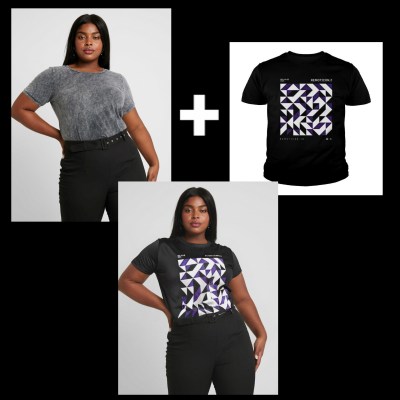Image generators have really taken off thanks to machine learning, and all kinds of new ideas have been turned on in people’s heads as a result. OOTDiffusion is one such project, its job being to allow virtual try-ons of clothing by combining a picture of a person and an item of clothing, and doing so in a coherent way.

When it comes to AI image generators, maintaining consistency of a particular subject in a picture while changing or combining other parts of the image isn’t a trivial task. (If you’re unfamiliar with the basics of how diffusion-type AI image generators work, we have you covered.)
Virtual try-on of clothing is not a new idea, but it’s also far from being a completely solved problem. It’s easy to feed a system high-quality images of people and clothing and ask it to combine them, but the outputs rarely emerge with all their limbs intact, figuratively speaking.
OOTDiffusion addresses the two big challenges in this area: making sure the outputs look natural and realistic, and preserving as much of the garment’s appearance and qualities as possible in the process.
It seems to to a very good job, and you can try it for yourself in the online demo. Check out the research paper for more details, and the GitHub repository provides all the code if you’d like to get a little more hands-on.
















I like the concept but clothing sizes and shapes are far from uniform. Without 3d model of the person, the item of clothing, and a catalog of fabric properties then you won’t really get what it will look like on you. The dimensions of the item of clothing will change after the initial wash, so being able to calculate it’s shape after being washed is vital.
That said, this is just fine if you’re just playing around.
I think the point of this is less for the customer– The ‘end user’– but I know a lot of screen printing design shops that spend a lot of time producing mockups (‘by hand’, Photoshop) for quoting out orders. This would save them a huge amount of time.
Yeah the fit is funny in the demo. It’ll scale the garment to any size. Or turn a stretchy slender t-shirt into a loose wrinkly one. Or modify the model body. That’s a dealbreaker for me, I can’t use it as a mockup tool if it also reshapes my bones.
All that is true but I think this would be more aimed at people buying clothing online, they could upload a picture and try on the clothes virtually, not perfect but a step up from pictures on models, and I’m it would drive company sales too.
I think that’s the problem; AI images break exactly those assumptions which you’d want to leverage in viewing pictures of the clothing. If the AI manipulates the image of yourself to look like the item fits properly when e.g. your torso is actually too long or short, that’s not much help.
If this could use a few actual measurements (either yours or the measurements of the item of clothing) as input to one of those 3d modeled character creators from video games, and just used AI to reskin the model to look more like you, then maybe I’d go for it.
But it’s just easier to upload a selfie than measure yourself, although I agree it would be more accurate, so people should just use this as casual tool. Also if the AI makes the item look like it fits properly that would probably make more people buy more clothes and what retailer would not like that?
1) [3D model from several pictures]+[item of clothing]+[fabric properties]
2) ???
3) Profit!
The last two the producer should already know.
First, well that’s what cellphones are for.
2021 remoticon shirt… I thought it was dazzle paint? You know, those strange patterns painted on ships about a century ago.
To be honest, it is the worst example you could choose.
Popular wear in the “bad part of town” or inner city schools.
This might be fun if it can put clothes on animals, too.
I tried that on a cat once, it just fell over.
The girl on the top left looks emaciated ….. please, somebody give her some food :(
Twiggy.
https://en.wikipedia.org/wiki/Twiggy
all the models in the demo appear to be AI generated
How do you know that? I was under the impression it was the clothes that were Ai.
no proof, just zooming in on the pictures because several of them creeped me out. I take it back – only some of them look AI generated. The models that look exceptionally smooth. So I looked in the repo and see OOTDiffusion/run/examples
/model/Model_1.png through Model_7.png are all the pics that looked “off”. The PNGs. The JPGs look like real model photos
If it is for customers to see if it matches the style they are looking for it is good. But if companies are using it in their product description it is wrong. The image of a product should be a photo of the actual product and not an AI generated image. We have enough fake things.